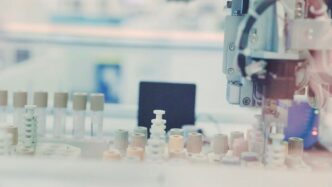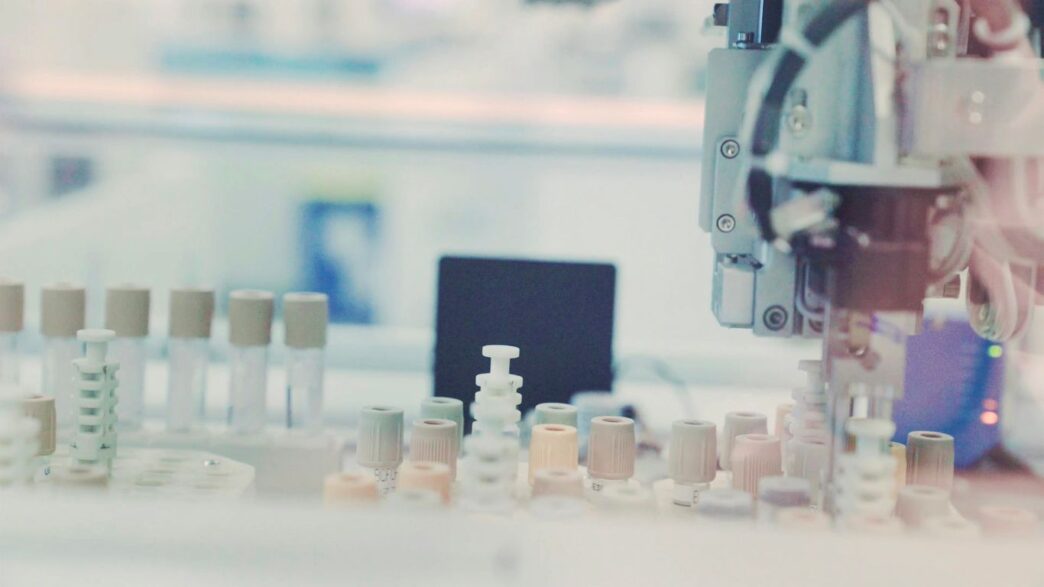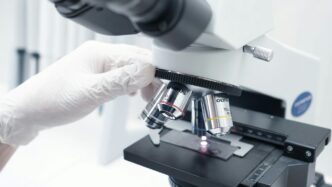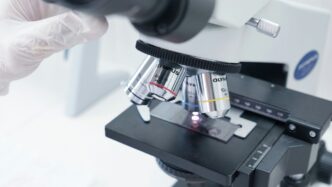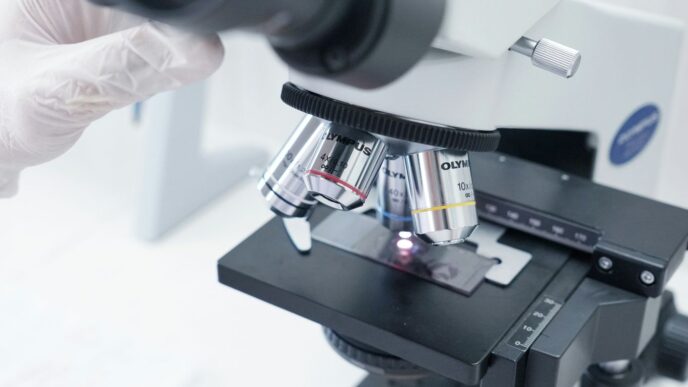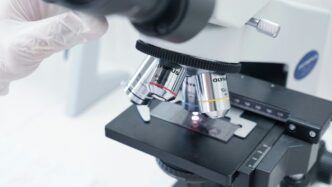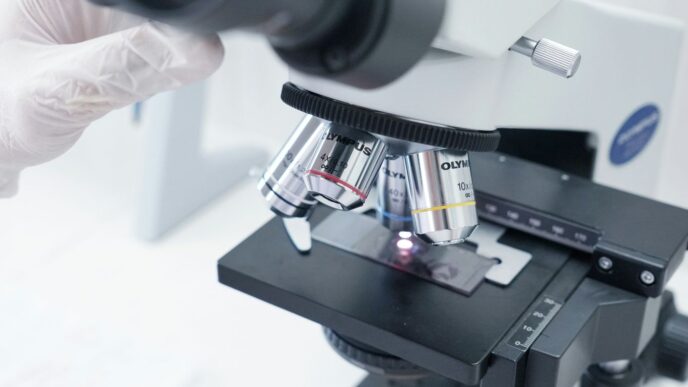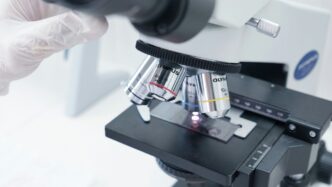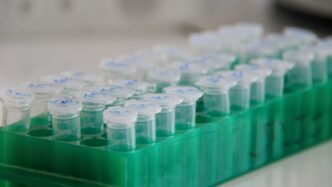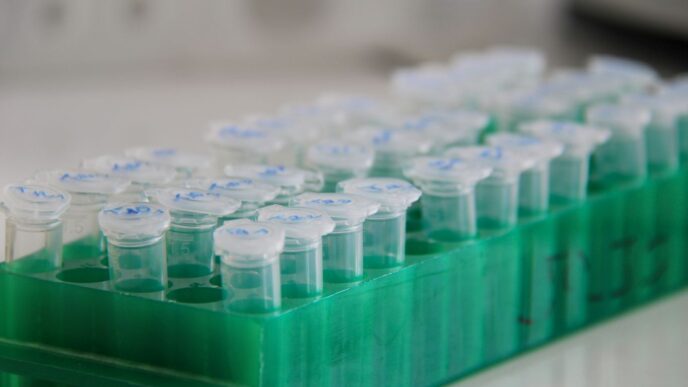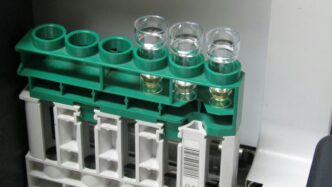When you hear about new medicines, you might think of big companies making pills or smaller, cutting-edge labs working with genes. That’s kind of the main idea behind the difference between biotech vs pharma. While both aim to improve health, they go about it in different ways, using different tools and focusing on different types of products. Let’s break down what sets them apart and what that means for people working in these fields.
Key Takeaways
- Pharma companies often focus on making drugs from chemicals, while biotech uses living things and biological processes.
- Pharma R&D tends to be a step-by-step process, whereas biotech research is more experimental and involves many different scientific areas.
- Pharmaceutical products are usually small molecule drugs (like pills), while biotech often creates larger, more complex products like antibodies and vaccines.
- Both industries have strict rules, but biotech’s newer technologies can bring unique regulatory challenges.
- Pharma is a crowded market focused on large-scale production, while biotech often relies on new ideas and partnerships to grow.
Understanding The Core Distinctions: Biotech vs. Pharma
Foundations and Focus: Chemical Synthesis vs. Biological Processes
It’s easy to mix up biotech and pharma, especially since both are about medicine, but their origins couldn’t be more different. Traditional pharmaceutical companies rely on creating drugs using chemical synthesis. They mix and match molecules in the lab, usually with a heavy focus on chemistry. Most often, these companies produce tablets, capsules, or injectables based on well-defined chemical formulas.
Biotechnology, on the other hand, is rooted in biology. Biotech companies use living systems—think bacteria, yeast, or even animal cells—to make their products. They’re experimenting with ways to alter cells, harness proteins, and use DNA itself to develop new treatments. It’s more like farming with cells than pure chemistry.
Here’s a quick table to break it down:
| Pharma | Biotech | |
|---|---|---|
| Main Method | Chemical Synthesis | Biological Processes |
| Core Focus | Small molecules | Proteins, genes, living cells |
| Source Mat’l | Raw chemicals | Living organisms/cells |
Research and Development Approaches: Linear vs. Interdisciplinary
If you ever wander through a pharma R&D department, you’ll notice there’s a pretty straightforward process. Drug discovery kicks off, followed by a series of tests, and, if all goes well, eventual approval. It’s structured, step-by-step, and usually involves perfecting one compound at a time.
Biotech R&D, though, is much messier (and honestly, kind of exciting). You get molecular biologists, chemists, engineers, and data scientists all crammed in a lab, trying everything from gene editing to growing organoids. The process looks more like brainstorming and then improving the best ideas on the fly.
- Pharma: Sequential development; predictable milestones.
- Biotech: Cross-disciplinary collaboration; lots of iteration.
- Project teams—especially in biotech—are full of surprises. Sometimes you fail, pivot, and stumble onto an even better idea.
Product Types: Small Molecules vs. Large Molecules and Biologics
Here’s where the real contrast shows up. The average pharma company churns out small molecules. These are chemically simple, and you can swallow most of them as pills. They’re usually easy to manufacture in bulk.
Biotech companies deal in the complicated stuff: large molecules and biologics. These are way bigger and can include proteins, antibodies, and even engineered viruses. Making them isn’t like mixing up aspirin—often, you have to grow batches of living cells and then carefully extract the medicine. Storage is trickier, too. Forget leaving it on a shelf; many biologics need refrigeration or even freezing.
- Pharma products: Small molecules, often taken orally.
- Biotech products: Proteins, antibodies, gene therapies—usually injected or infused.
- Biologics can be customized for individual patients, which is opening new doors in personalized medicine.
So, if you’re thinking about where you fit, ask yourself: Would you rather be in a lab, doing chemistry experiments and following set protocols (pharma)? Or do you want to wrestle with cells, bacteria, and genetics (biotech)? That’s the core split, and it shapes everything else that follows.
Navigating The Regulatory Landscape
Dealing with the rules and regulations around getting new medicines and treatments approved can feel like a maze, especially when you’re talking about biotech. It’s not quite the same as the old-school pharmaceutical world.
Established Frameworks for Pharmaceuticals
For traditional pharma, the path is pretty well-trodden. Agencies like the FDA have long-standing processes for evaluating drugs. They look at whether a drug is safe, if it actually works, and if it’s made consistently. This usually involves a lot of testing, including human trials, to prove these points. It’s a rigorous system, but it’s been around for a while, so companies generally know what to expect.
Evolving Guidelines for Biotechnology Innovations
Biotech is a bit different. Because it often involves complex biological products like proteins, antibodies, or even gene therapies, the rules have to adapt. Think about things like gene editing or cell therapies – these are new frontiers. Regulators are constantly figuring out how to assess the safety and effectiveness of these cutting-edge treatments. This means the guidelines are often still being written as the science progresses. It can be a slower, more uncertain process because the technology itself is so new.
Addressing Novel Challenges in Biotech Regulation
Biotech brings up unique questions. For example, how do you regulate a therapy that’s made from a patient’s own cells? Or a drug that targets a very specific genetic marker? These aren’t always straightforward. Companies might need to work closely with regulatory bodies to figure out the best way to test and approve these novel products. Sometimes, there isn’t a clear regulatory path yet for certain types of treatments, like those aimed at slowing down aging processes directly, even if they could have a big impact on quality of life. This requires a lot of discussion and sometimes, a bit of creative problem-solving between the developers and the regulators.
Market Dynamics and Business Models
So, how do these companies actually make money and stay afloat? It’s pretty different depending on whether you’re in the established pharma world or the newer biotech scene.
Competitive Pharmaceutical Market
The big pharma companies? They’re in a super crowded space. Think of it like a huge marketplace where everyone’s trying to sell their version of a cure. They’ve got tons of resources, and their main goal is often to get their drugs out there to as many people as possible. This means they’re really good at making a lot of a specific drug and getting it into pharmacies and hospitals everywhere. Their success often hinges on getting patents for new drugs and holding onto that exclusive right to sell them for a good long while. It’s all about scale and market share.
Biotech’s Focus on Innovation and Partnerships
Biotech is a bit more of a wild west, in a good way. It’s often driven by smaller companies or even startups that are coming up with brand-new ideas. They’re not always focused on making millions of pills right away. Instead, they’re often looking for that next big breakthrough, like a new way to edit genes or a super-specific antibody treatment. Because they might not have all the money or manufacturing power themselves, they frequently team up with bigger companies. It’s common to see them form partnerships or license their discoveries to get them developed and out into the world. This means their business model is often about creating something novel and then finding the right partner to help it grow.
Scaling Production and Distribution Strategies
When it comes to actually getting a treatment to patients, the strategies diverge. Pharma giants have their factories and distribution networks already set up, making it easier to ramp up production for established drugs. They’ve got the logistics down pat. Biotech companies, especially those working with complex biologics (think proteins or antibodies), might face a steeper climb. Manufacturing these can be tricky and expensive, often requiring specialized facilities. So, their distribution plans might be more focused on specific patient groups or require unique handling, like cold storage. It’s a whole different ballgame compared to just churning out pills.
Key Areas of Innovation and Convergence
It’s pretty wild how much is happening at the intersection of biotech and pharma these days. Things are really starting to blend together, and some of the most exciting work is happening where these fields meet. We’re seeing a lot of new ideas pop up, especially in a few key areas.
Precision Medicine and Companion Diagnostics
This is a big one. Precision medicine is all about tailoring treatments to individual patients based on their unique genetic makeup or other specific biological markers. Think of it as moving away from one-size-fits-all medicine. For this to really work, you often need a companion diagnostic – basically, a test that figures out if a specific drug will be effective for a particular patient. Developing both the drug and the diagnostic together is a complex dance, and it’s where biotech and pharma are really collaborating. It’s not just about finding a drug; it’s about finding the right drug for the right person, and having the test to prove it.
Advancements in Drug Delivery Systems
Getting a drug to where it needs to go in the body, and at the right time, is a whole field in itself. We’re not just talking about pills anymore. There’s a lot of innovation happening with things like:
- Injectables: New formulations that allow for less frequent dosing, like once a month or even less.
- Patches: Transdermal patches that deliver medication steadily over time.
- Implantables: Devices that can be implanted in the body to release drugs slowly.
- Inhalers and Nebulizers: For respiratory conditions, making sure the medication gets deep into the lungs.
This area often involves a lot of engineering and device development, which is a natural place for biotech and pharma to join forces. Making a drug work better often means figuring out a smarter way to deliver it.
The Role of Digital Health in Therapeutics
Digital health is changing everything, and healthcare is no exception. It’s not just about apps that track your steps anymore. We’re seeing digital tools play a bigger role in how we develop and use medicines. This includes:
- Digital Biomarkers: Using data from wearables or sensors to track disease progression or treatment response in real-time.
- Patient Support Apps: Tools that help patients manage their condition, remember to take their medication, or connect with support groups.
- Digital Therapeutics (DTx): Software-based interventions that can treat or manage a medical condition, sometimes used alongside traditional drugs.
The integration of digital tools with traditional therapies is opening up entirely new ways to manage health and disease. It’s a rapidly evolving space, and companies that can bridge the gap between biology and technology are really going to lead the way.
Career Paths in Biotech and Pharma

So, you’re thinking about a career in the life sciences, huh? It’s a big field, and figuring out where you fit can feel a bit overwhelming. Both biotech and pharma offer exciting opportunities, but they definitely have their own flavors when it comes to jobs and what you’ll actually be doing day-to-day. Let’s break it down.
Roles in Research and Development
This is probably what most people think of first. In R&D, you’re on the front lines of discovery. Pharma often involves a more structured, step-by-step process, focusing on refining existing drug classes or finding new chemical compounds. Think of chemists tweaking molecules in a lab, or biologists running tests on cell cultures. It’s about methodical progress.
Biotech, on the other hand, is often more about exploring uncharted territory. You might be working with genetic engineering, cell therapies, or complex biological systems. It’s a bit more experimental, and the projects can be really diverse. The key difference here is often the scale and complexity of the biological systems being studied.
Here are some common R&D roles:
- Research Scientist: Designing and conducting experiments, analyzing data, and contributing to new discoveries.
- Process Development Scientist: Figuring out how to make a drug or biologic efficiently and safely on a larger scale.
- Clinical Research Associate (CRA): Overseeing clinical trials, making sure they follow protocols and regulations.
- Bioinformatician: Analyzing large biological datasets, often using computational tools.
Opportunities in Regulatory Affairs and Market Access
Once a drug or therapy is developed, it needs to get approved and reach patients. That’s where regulatory affairs and market access come in. These roles are super important and require a sharp mind for details and rules.
In regulatory affairs, you’re the bridge between the company and government agencies like the FDA. You’ll be preparing and submitting applications, making sure all the paperwork is correct, and communicating with regulators. It’s a field that demands precision and a deep understanding of the legal and scientific requirements.
Market access is about making sure patients can actually get the treatments once they’re approved. This involves working with insurance companies, understanding healthcare economics, and demonstrating the value of a product. It’s a mix of science, business, and policy.
Key responsibilities in these areas include:
- Developing regulatory strategies for new products.
- Preparing and submitting regulatory filings (like INDs and NDAs).
- Interacting with regulatory agencies during the review process.
- Conducting health economics and outcomes research (HEOR).
- Developing pricing and reimbursement strategies.
Building a Personal Brand on LinkedIn for Industry Entry
Okay, so you’ve got the skills and you know the roles you’re interested in. How do you actually get noticed? In today’s job market, especially in competitive fields like biotech and pharma, having a strong online presence is a big deal. LinkedIn is your main stage here.
Think of your LinkedIn profile as your digital resume, but way more dynamic. You want to make it clear what you do and what you’re passionate about. Use keywords related to your field – things like ‘drug discovery,’ ‘clinical trials,’ ‘biologics,’ ‘regulatory affairs,’ or specific therapeutic areas you’re interested in.
Here’s how to make your profile work for you:
- Professional Photo and Headline: Use a clear, professional headshot. Your headline should be more than just your job title; it should briefly state what you do and what you’re looking for, e.g., ‘Biochemistry Graduate Seeking R&D Opportunities in Oncology’ or ‘Experienced Regulatory Affairs Specialist focused on Biologics.’
- Detailed Experience and Skills: Don’t just list your past jobs. Describe your accomplishments using action verbs and quantify your results whenever possible. Add all relevant skills, and ask former colleagues or supervisors to endorse them.
- Engage and Share: It’s not just about having a profile; it’s about using it. Share relevant industry articles, comment thoughtfully on posts from companies or leaders you admire, and connect with people in your target field. This shows you’re engaged and knowledgeable.
Building a personal brand takes time, but it can really open doors and help you stand out from the crowd when applying for jobs.
Workplace Culture and Employee Experience
So, what’s it really like to work in biotech and pharma day-to-day? It’s not just about the science or the bottom line; it’s about the people and how they feel at work. Things are definitely changing, and companies are starting to pay more attention to what makes employees tick.
The Evolution of Workplace Flexibility
Remember when flexibility in these industries seemed like a pipe dream, especially for folks on the production floor? Well, times are changing. Technology and new ways of scheduling are making it more possible than ever. Turns out, 85% of people in biotech and pharma say having flexibility influences whether they stay or go at a company. That’s a huge number. But it’s not just about where you work anymore. It’s also about how you work. This means having some control over your time, being able to handle personal stuff without a fuss, and even choosing how you get your tasks done. It’s about feeling trusted and having a bit of autonomy.
- Time Flexibility: Adjusting work hours for appointments or family needs.
- Location Flexibility: Working remotely or in a hybrid setup when possible.
- Task Flexibility: Having a say in how projects are approached and completed.
The Importance of Empathy and Action in Leadership
Lately, with all the ups and downs companies have seen, empathy has taken a bit of a hit. Only about 55% of employees feel it’s a big part of their company culture, though a slightly higher number (65%) feel their direct boss is empathetic. But here’s the thing: people don’t just want to feel like you understand their struggles; they want you to do something about it. Practical empathy means leaders actively helping out, removing obstacles, and making real changes. When leaders show this kind of support, employees feel more seen, more fulfilled, and are more likely to stick around. It’s like a muscle – you have to exercise it.
Equitable Opportunities and Skill Development
There’s a big group of workers, sometimes called the ‘essential 80%’, who might not have the same access to technology or opportunities as others. This can make them feel overlooked. Companies need to make sure everyone, no matter their role, has a fair shot. This includes offering flexibility where possible, giving people a voice in decisions, and making sure training opportunities are available to everyone. With how fast things are changing, especially with new tech, learning new skills is super important. About 44% of current skills might be outdated in the next five years, so continuous learning isn’t just a nice-to-have; it’s a must-have for staying relevant and growing in your career.
Wrapping It Up: Pharma vs. Biotech
So, we’ve looked at how the worlds of pharma and biotech work. They both aim to make people healthier, but they go about it in different ways. Pharma often sticks to making traditional medicines, while biotech is busy with newer, more complex biological stuff. Knowing these differences can really help if you’re thinking about a career in either field. It’s a big area with lots of different jobs, and understanding the basics helps you figure out where you might fit in and how you can contribute to making healthcare better.
Frequently Asked Questions
What’s the main difference between biotech and pharma?
Think of it this way: Pharma companies usually make medicines using chemistry, like creating pills from scratch. Biotech companies use living things, like cells or genes, to make treatments, often more complex ones like special proteins or vaccines.
Are biotech products always more advanced than pharma products?
Not necessarily. Both fields create important medicines. Pharma often focuses on well-known drug types, while biotech is known for exploring newer, cutting-edge biological treatments. Both aim to help people get better.
Is it harder to get a biotech drug approved than a pharma drug?
Both types of drugs go through strict testing for safety and how well they work. Biotech drugs can sometimes be more complex, so regulators might look at them with extra care, but the goal is the same: making sure they are safe and effective.
Do pharma and biotech companies work together?
Yes, they often do! Smaller biotech companies might discover new ideas, and larger pharma companies can help them develop and produce those ideas into medicines that more people can use. It’s like teamwork for health.
What kind of jobs can you get in these fields?
There are many jobs! You can work in research labs developing new treatments, help with getting drugs approved by the government, or work on selling and explaining the medicines. There are roles for scientists, doctors, business experts, and more.
Is it important to have a good work environment in biotech and pharma?
Absolutely! Companies are learning that offering things like flexible work hours and showing they care about their employees makes a big difference. When people feel supported and have chances to learn new skills, they do better work.

